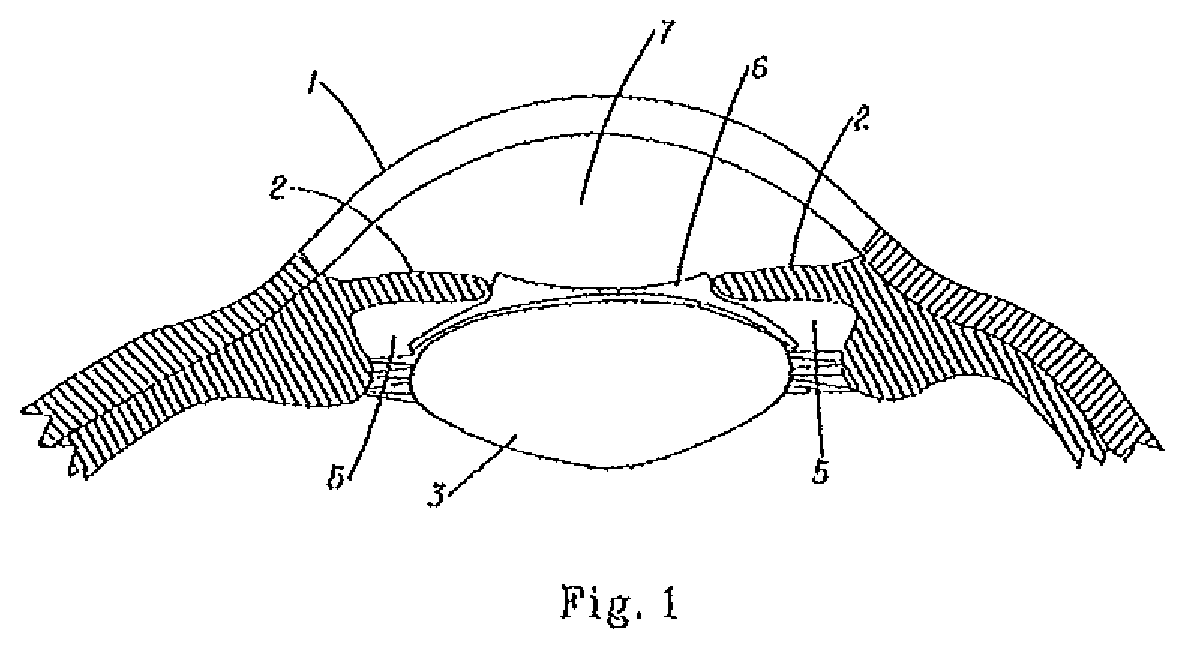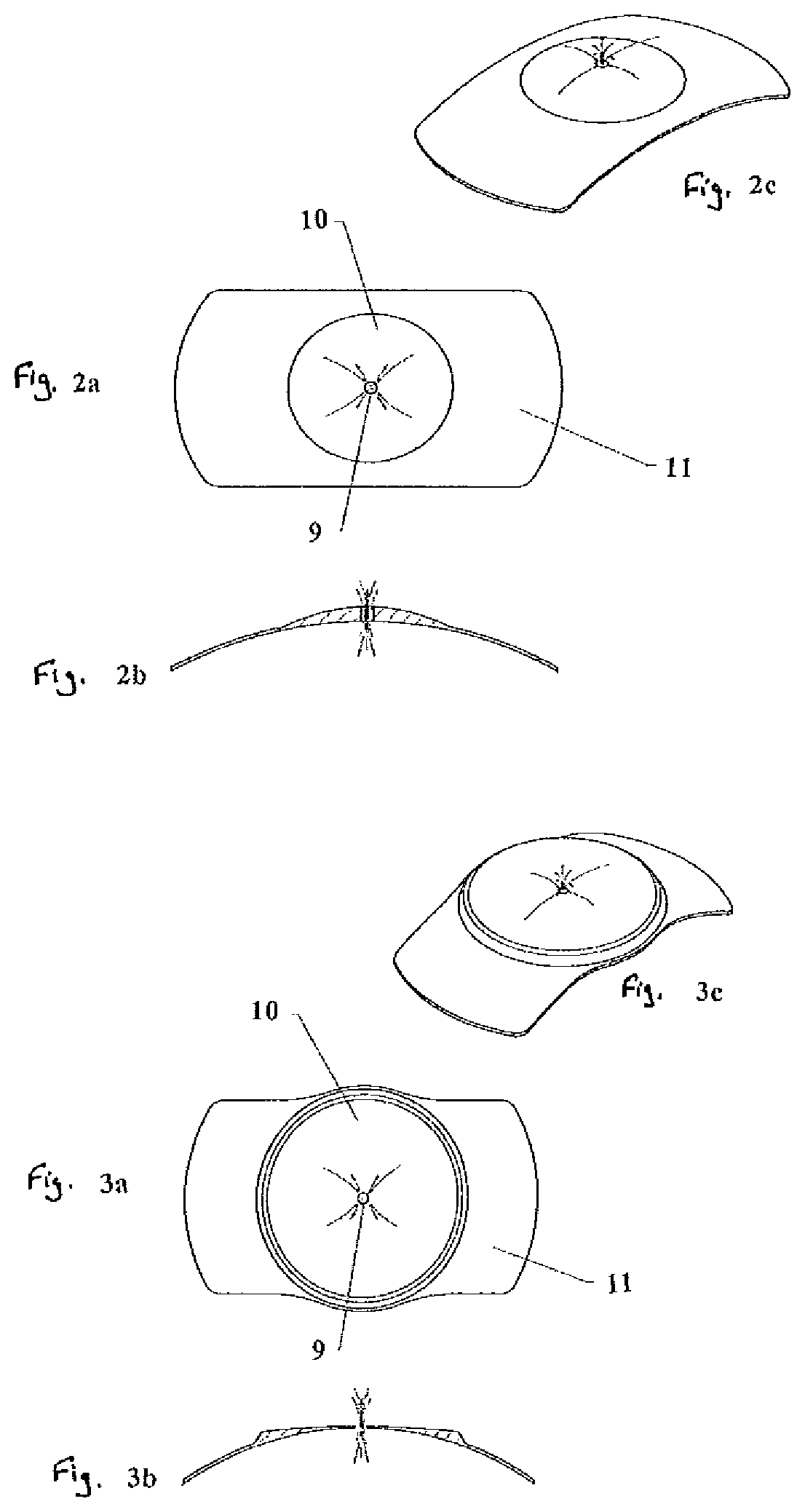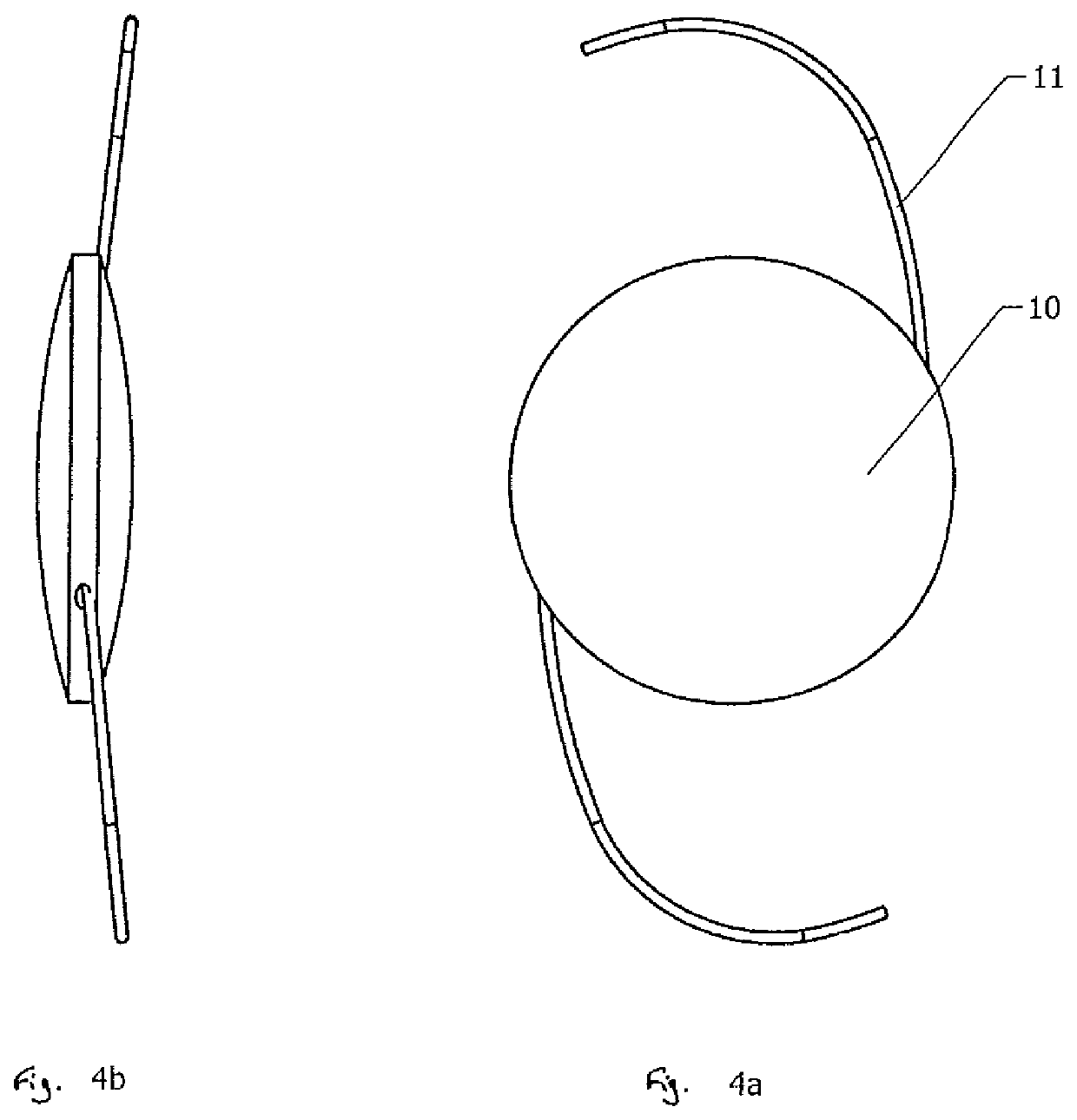Self-centering phakic refractive lenses with parachute design
a phakic refractive lens and parachute technology, applied in the field of intraocular lenses, can solve the problems of affecting the acceptance of this procedure, affecting the stability of the optics, and affecting the operation, so as to achieve stable centration of the optics, preserve optical function, and reduce the risk of cataract induction of the human crystalline lens
- Summary
- Abstract
- Description
- Claims
- Application Information
AI Technical Summary
Benefits of technology
Problems solved by technology
Method used
Image
Examples
example 1
Silicone Phakic Refractive Lens (Prior Art)
[0026]A small amount of a two-part silicone material with a specific gravity between 0.95 and 1.05 is mixed at a 10:1 ratio and placed in a metal mold. The mold is clamped shut and placed in a curing oven at 120° C. for 70 minutes. The mold is cooled to room temperature, opened, and the phakic lens is carefully removed. The phakic lens has the configuration and dimensions of the lens in FIG. 1.
[0027]The lens is placed in a container with water and the lens can be seen to float on the top of the water. If forced under the water surface, the lens remains floating under the surface. If a stream of moving water is caused to flow under the floating lens, the lens returns to the surface. The lens movement is uncontrolled, with occasional movements towards the side of the container or exaggerated rocking movements.
example 2
Silicone Phakic Refractive Lens with Center Hole
[0028]A small amount of a two-part silicone material with a specific gravity of 0.95 to 1.05 is mixed at a 10:1 ratio and placed in a metal mold. The mold is clamped shut and placed in a curing oven at 120° C. for 70 minutes. The mold is cooled to room temperature, opened, and the phakic lens is carefully removed. A hole with a diameter of approximately 0.4 mm is made in the center of the optic. The phakic lens has the configuration and dimensions of the lens in FIG. 6.
[0029]The lens is placed in a container with water and the lens can be seen to float on the top of the water. If forced under the water surface, the lens remains floating under the surface. If a stream of moving water is caused to flow under the floating lens, the lens returns to the surface. The lens movement is more controlled than the lens with no hole in the center; the lens rises vertically and the lens orientation is conserved.
example 3
Silicone Phakic Refractive Lens with Center Hole
[0030]The phakic refractive lens of Example 2 is evaluated for optical performance and compared to the optical performance of the lens of Example 1 that has no hole in the center of the optic. A commonly used method for evaluating optical performance is to place the lens on an optical bench with a collimator, objective lens, and a US Air Force 1951 Target or similar target image. The ability of the test lens to completely and clearly resolve an image pattern such as a group of closely spaced lines or bars is evaluated as a measure of resolution efficiency and imaging quality. Another measure of imaging quality and optical performance is the modulation transfer function (MTF). It is found that when the center hole is between 0.2 and 0.5 mm in diameter, there is no significant difference in optical performance between the lenses of Example 1 and Example 2.
PUM
 Login to View More
Login to View More Abstract
Description
Claims
Application Information
 Login to View More
Login to View More - R&D
- Intellectual Property
- Life Sciences
- Materials
- Tech Scout
- Unparalleled Data Quality
- Higher Quality Content
- 60% Fewer Hallucinations
Browse by: Latest US Patents, China's latest patents, Technical Efficacy Thesaurus, Application Domain, Technology Topic, Popular Technical Reports.
© 2025 PatSnap. All rights reserved.Legal|Privacy policy|Modern Slavery Act Transparency Statement|Sitemap|About US| Contact US: help@patsnap.com



